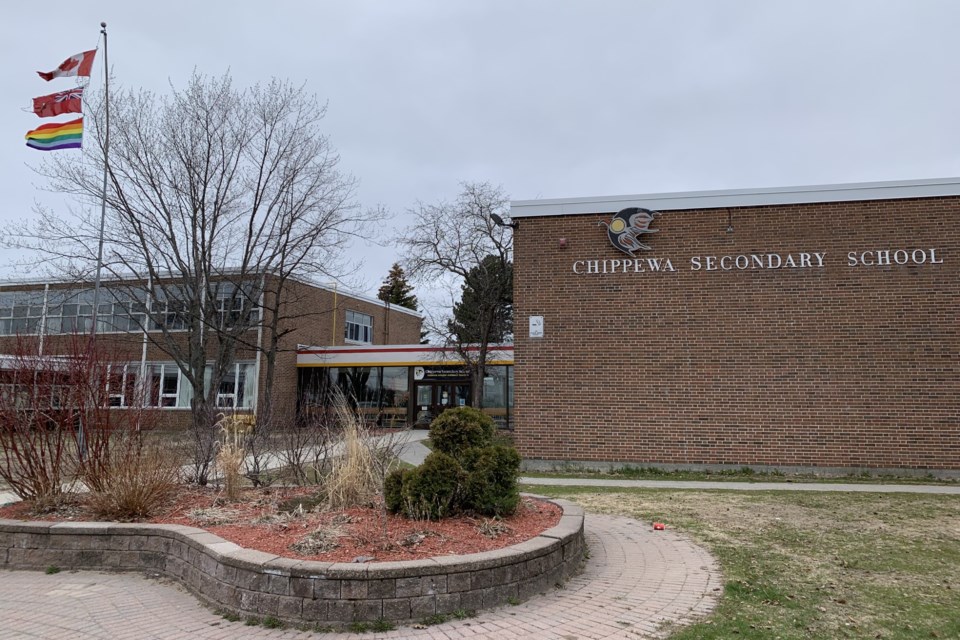Chippewa Secondary School is getting fenced in, as per a decision by the Near North District School Board at its meeting Tuesday night. The fence will cost $611,000 and is designed to separate the city’s homeless and public drug users from the students.
There is a low-barrier homeless shelter across the street from the school, and over the past years, the area around the school has been littered with drug paraphernalia such as syringes, and sometimes shelter patrons will hang out near the school’s entrances to avoid the weather while waiting for the shelter or the warming centre to open.
See related: School board fencing Chippewa in to keep intruders out?
The fence will be in two parts. The first will cover the track and field area. The second will enclose the school, running along Chippewa Street West and parallel to High Street. The fence “will come along in the back as well,” noted Superintendent Seija Van Haesendonck.
Haesendonck is the Superintendent of Business, and she explained to the trustees that the money for the fence comes from “school renewal funding” and maintaining the fence will be included in the operations budget.
Superintendent Gay Smylie explained that since the shelter moved to the Chippewa Street location in August 2020, “the site has continued to grow,” and “incidents continue to occur” such as finding drug paraphernalia daily on school grounds and within the surrounding areas, such as trails the kids take to school.
“We continue to work diligently with our stakeholders,” emphasized Smylie, referring to the City of North Bay and the District of Nipissing Social Services Administration Board (DNSSAB), which operates the shelter. “However, incidents continue to occur,” she reiterated, such as the drug paraphernalia and “trespassers” on school grounds, “and individuals taking residence on the property.”
The extra security guard and the additional cameras “have been effective” in increasing safety, “however, they don’t address the physical security of the external site,” Smylie added.
Hence the fence shall rise.
Trustee Chantal Philips noted that she was “under the impression” that Chippewa Street “was a temporary site” for the shelter, and if so, questioned whether it was prudent to invest over half a million dollars in fencing.
Smylie noted that the question of permanence would best be directed to the City of North Bay and DNSSAB.
Philips also emphasized that a fence will protect kids when they are inside, but eventually, those students have to return to the street. She suggested the fence might serve as “a limited strategy,” and more focus should be paid to ensuring a safer environment in general.
“The city should be involved with that as it has been in the downtown core,” she said. “This is something that happens on city streets and is a result of the city’s decision.”
David Briggs is a Local Journalism Initiative reporter who works out of BayToday, a publication of Village Media. The Local Journalism Initiative is funded by the Government of Canada.



